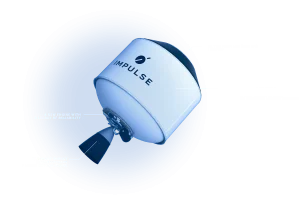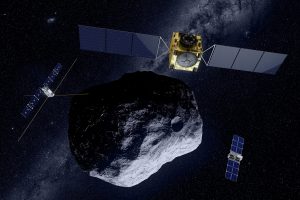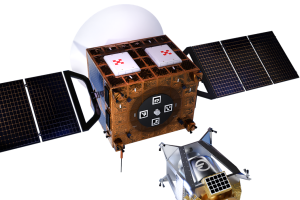It is designed to take payloads of over 5 tons directly from Low Earth Orbit (LEO, 300km from earth) to Geostationary Orbit (GEO). This would be in less than 24 hours says the company.
Helios
“The Helios vehicle unlocks the capability to move from LEO to MEO or GEO in a matter of hours – not days or months, as is currently the norm using conventional orbit raising methods,” said Martin Halliwell, former CTO of SES Satellites.
“This changes the mission value proposition significantly in several ways, including decreasing the time to reach operational status, limiting potential radiation exposure, and reducing the overall payload mass by decreasing the size of thrusters and amount of fuel required. Helios will open new opportunities for MEO and GEO operators beyond today’s limited mission choice criteria.”
Helios will be powered by a 15,000 lbf (67 kN) engine called Deneb, revealed the company, and it would burn up to 14,000 kg of propellant across each mission. The engine has been designed by Tom Mueller, a co-founder of SpaceX.
Compatible with Falcon 9, Falcon Heavy, New Glenn and other medium-lift and super-heavy rockets – using standard payload interfaces – Helios services are aimed at the communications, imaging, defense, and scientific sectors.
“Today, the status quo for many satellites launched to LEO is to use electric propulsion to slowly arrive at their target orbit over a period of months; the alternatives are to either include extra propulsion in the satellite itself, complicating the design and increasing mass and cost, or to pay for a much more expensive launch directly to MEO or GEO,” explained the company.
It will be using a nontoxic, high-performance propellant combination of liquid oxygen and liquid methane, the same as Starship and Relativity’s Terran R.
Deneb’s first engine test-fires are scheduled for mid-2024, and the first demo launch of the vehicle is targeted for early 2026.
The design and development team of Impulse includes many “veterans of the SpaceX Merlin engine”, highlighted Impulse Space.
You can read more about Helios here.
Mira
Helios joins Mira as the second Impulse vehicle.
It is meant to be the “long-haul” complement to Mira’s “last-mile delivery” services.
The company was founded in 2021 and is based in Redondo Beach.
See also: Impulse Space raises $45 million in Series A funding
 Electronics Weekly Electronics Design & Components Tech News
Electronics Weekly Electronics Design & Components Tech News




